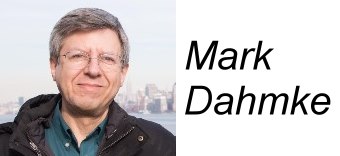How a Kid from a Small Town in Nebraska Got his Dream Job
By Mark Dahmke
I graduated from high school in 1975, which was a good year for me for several reasons. I won first place in the Engineering Division of the International Science and Engineering Fair that spring. I had already begun taking college credit courses at Platte Community College in 1974. My plan was to take many of the prerequisite courses where classes were smaller and tuition was cheaper, before transferring to the University of Nebraska.
In the summer of ‘75 I met Chris Crawford, who had just been hired to teach physics at Platte College. His interests included astronomy and game design. Chris was a graduate of the University of California at Davis, and the University of Missouri at Rolla. His arrival at Platte College in time for my freshman year was a lucky break for me.
In January, 1975, MITS introduced the first personal computer kit, called the Altair. An article in Popular Electronics described the computer and its capabilities. I immediately began researching the hardware and software requirements to build my own computer. I planned to use it to simulate neurons and neural networks, which was a continuation of my science fair project. When I showed Chris Crawford what I was building, he became interested in using microcomputers for computer games. Chris bought a KIM-1 single board computer and started writing a tank warfare game he later called Tanktics. I was able to try one of the early versions of this game in 1977, which used only the KIM’s numeric keypad and LED display for input/output.
The Altair was too expensive for my budget at that time, but an earlier generation chip called the Intel 8008 was also available which was much less expensive. I started acquiring parts and planned to build my own system from scratch. I worked on it through 1976 and then decided that it wasn’t powerful enough for my needs, so I abandoned it and started buying circuit boards and chips for a system available from Martin Research in Northbrook, Illinois. By 1977 I had a working 8080 microcomputer with one kilobyte (1024 bytes) of memory and no external storage. Loading of programs was done through a calculator-like keypad and numeric display, one byte at a time.
As soon as the machine worked, I started expanding it. I designed a circuit that allowed it to drive the X and Y axes of my oscilloscope, allowing me to use the computer to draw crude pictures on the scope’s screen. I also added a cassette tape interface so I could save and load programs. I added memory in geometric progression: 2K, 4K, 8K, 16K, 32K, until the machine could hold no more. I added a “TV Typewriter” board that allowed it to display 40 x 24 characters of text on a TV screen. Next I upgraded the tape drive to one that could store more data and could be controlled by the computer, and I wrote a “tape operating system” that wrote a directory of files to the tape, to make it easier to retrieve programs. Prior to that, loading a program from tape meant manually rewinding the tape to the start of the program, pressing Play while simultaneously running the “load program” function on the computer. It was slow and error-prone. Work continued on this system through 1980, seeing the addition of a floppy disk drive, a used 300 baud telephone modem and printer.
I transferred to the University of Nebraska in the spring of 1976, and moved my homebuilt computer to my dorm room in Lincoln. I wrote a short article about an Intel 8080 machine language assembler program I’d written. I submitted the article to a new computer magazine (I can’t recall the name now), but it wasn’t accepted – probably because the magazine went out of business after about two months.
Late in the spring of ‘76, I decided to apply for the Engineering Cooperative Education program. The co-op program was more than an internship arrangement – students were paid as regular employees. They worked summers and several semesters, alternating between work and school. I interviewed with 3M in Minneapolis and the Nebraska Public Power District, located in Columbus, Nebraska. Although I really wanted the 3M job, I received an offer from NPPD first.
I began working at NPPD in June. I was assigned to the Planning Department, and began by working on statistics and load flow calculations. As I moved from one section of the department to another, I applied my programming skills to automate many tasks the engineers were doing by hand. Pocket calculators were still not widely used at the time, and weren’t programmable. I wrote programs that ran on NPPD’s IBM 370/135 mainframe that performed functions similar to modern spreadsheet applications. I also used six months’ worth of hourly load data to plot a three-dimensional graph of electrical demand. This was the first time the data had ever been displayed in that way.
When I started my co-op job at NPPD, I met Jim Hanna, a manager in NPPD’s data processing department. Jim had subscribed to a new magazine called Byte and had all the back issues – good timing – thank you Jim! I borrowed all the back issues and read them from cover to cover, several times. I also noticed that Byte was looking for authors to write for the magazine. I wrote several letters commenting on previous articles, and then wrote a letter to Editor-in-Chief Carl Helmers about an idea for a command language interpreter. Carl was supportive of the concept, and encouraged me to continue work and submit it for publication. I also noticed the list of Consulting Editors on the Byte masthead. I commented to one of my co-workers at NPPD that I intended to become one of Byte’s Consulting Editors and get my name on that masthead. This was not a case of “maybe” – somehow I knew I could make it happen.
Throughout 1976-1977 I continued to write articles and improve my writing skills. I also continued writing software for IBM mainframes and my microcomputer. In late ‘78, while talking with Byte’s managing editor, Ray Coté, I learned that Byte was doing an issue on scientific applications. I mentioned that I’d developed a program that generated star maps, and Ray suggested that I submit an article for consideration. It appeared in the April 1979 issue of Byte and was my first published computer-related article. Ironically, my starmap program didn’t run on a personal computer yet; it ran only on an IBM mainframe.
Next, I wrote a primer on multiprocessing (two or more computers tied together to work in tandem), and a primer on multitasking (running more than one program at a time on a single computer). In 1978 the multiprocessing article appeared in a Byte Books collection of articles. The Introduction to Multitasking article later became the basis for my first book Microcomputer Operating Systems, published by McGraw-Hill in 1982.
My homemade computer did not like the noisy electrical environment in the dorm. The tape drive never worked right, despite all attempts to filter out the noise. Finally I gave up, sold it to friend and fellow computer science student Mike Meyers, and bought an iCOM 5.25” floppy disk drive. It took over a month to redesign the computer to work with the floppy drive and S-100 controller card. By June of ‘78 my computer was back up and running. I also bought a used 300-baud (30 characters per second) acoustical modem and successfully dialed up and connected to the University’s 370 mainframe. I believe I was the first person on campus to connect a microcomputer to the mainframe by modem. I used my computer as a “dumb terminal” to access the mainframe from the dorm, saving many trips to the computing center. I also used the mainframe as a remote printer, since dot matrix printers cost over $1,000 at that time. I would log on to the mainframe and upload class writing assignments and computer source code listings to be printed on a high-speed printer at the computing center. This marks the first use of a multi-million dollar IBM 370 mainframe as a printer for a $500 microcomputer.
I resigned from NPPD in 1978 because I had an offer to work for the University of Nebraska Computing Network, which aligned more closely with my evolving career path. I worked for Ken Livingston in Academic Computing Services. One afternoon in the fall of 1978, I was walking past Ken’s office and heard a co-worker mention the words “microcomputer” and “software” in the same sentence. I stuck my head in the door and asked what they were talking about. Ken told me that the Chair of the Home Economics College wanted someone to come over to talk to them about microcomputers, so I volunteered to go along. Dr. Lois Schwab was the head of the Human Development and Independent Living Program in the college. After discussing their need for computer-based learning software, I mentioned some of the work I was doing with voice synthesis and microcomputers. Both of us knew a student named Bill Rush who had cerebral palsy and used a headstick and typewriter to communicate. I suggested that a microcomputer could be built that would allow Bill to speak. Dr. Schwab found this very interesting and arranged another meeting to discuss the idea. I later wrote a proposal, and Dr. Schwab began arranging for funding. I acquired used microcomputer parts and a new Computalker voice synthesizer board, and began writing software. By the spring of ‘79, Bill was able to speak for the first time. Bill took the computer home with him that summer, and I continued to make improvements on the software.
In the fall of ‘79, Dr. Schwab made a presentation at a conference in Chicago where she described the work that had been done on the voice synthesizer (dubbed the “Bionic Voice”). Anne Fadiman, a writer for Life Magazine, expressed interest in the project and later came to Lincoln to do a story about Bill. The story appeared in the January 1980 issue of Life. With additional funding we added a word processor, printer and other peripherals.
Throughout 1978 and 79, I wrote several articles for Byte and a sister publication called onComputing. In the fall of ‘79, the voice synthesizer project had attracted so much attention that I started to receive job offers and calls from corporate recruiters. One offer was from a company in New York that wanted someone with microcomputer experience. The project sounded intriguing so I decided to go for an interview. I also wanted to attend the Philadelphia Computer Show that was being held the same week. The hotel room and airfare from New York to Philadelphia cost about $200, which was about all I had in my checking account. With an empty bank account, I went off to Philadelphia to meet Chris Morgan, the new editor of Byte.
Chris and I had talked many times by phone but had never met in person. Byte was looking for full-time editors and I decided to apply for a job. We spent several hours talking, and then Chris invited me to come to Peterborough, New Hampshire to visit Byte. Chris also sent me an article to edit, to determine if I had any editing skills. I don’t recall what the article was about, but I do remember looking at it and thinking: my future will be determined by this manuscript. It was a well-written article and I didn’t have to make many changes, but I was very relieved when Chris said, “I really like what you did with that article.” I became a Consulting Editor in the spring of 1980, but continued to live in Nebraska.
Chris invited me to attend the West Coast Computer Faire (WCCF) in San Francisco, in March of ‘80. For many years WCCF was the most important exhibition of microcomputer technology. I first went to San Jose to visit Chris Crawford, who had been hired by Atari to design computer games for the new Atari 800 microcomputer. Chris later worked in R&D at Atari for Alan Kay, the man often credited with the invention of the graphical user interface that lead to products like the Macintosh and Microsoft Windows. I later introduced Chris Crawford to Chris Morgan, and over the next few years he wrote several articles for Byte and Popular Computing. Chris’s career in computer game theory and design went to incredible heights – he was even interviewed on ABC’s Nightline once. For more details see www.erasmatazz.com.
The first West Coast Computer Faire was held in 1977 and is often referred to as the birth of the personal computer industry. I’d read about it in Byte and Dr. Dobbs Journal of Computer Calisthenics and Orthodontia (I’m not kidding, that was the name of the magazine), but actually going was something I could only dream about. This was the fifth fair, where Microsoft announced its first hardware product, the Z-80 SoftCard, which gave the Apple II the ability to run CP/M programs. All of the Byte editors and staff took turns staffing the booth and giving out free copies of the magazine. Here I was, an editor for the most popular and influential magazine in an exploding personal computer industry, at a computer trade show with the likes of Bill Gates, Steve Jobs and virtually everyone else who helped start this industry. Life just doesn’t get any better, especially when you are 24 years old and not even out of college yet.
Chris Morgan introduced me to Dan Bricklin, the co-inventor of VisiCalc, the first spreadsheet program that ran on the Apple II, and Jim Warren, one of the founders of the West Coast Computer Faire. I also met science fiction writer Jerry Pournelle. He was one of the first science fiction writers to use a computer word processor, and he became fascinated with the technology. Jerry’s first computer is now on display at the Smithsonian. Because of his expertise in this area, Chris asked him to write a column about personal computers.
I spent most of my time writing for Byte in the spring of ‘80. I was asked to speak about the voice synthesizer project at the National Computer Conference (NCC) in Anaheim, and at a conference about assistive technology for people with disabilities, held in Oakland. Byte asked me to edit a book on speech synthesis technology, to be written by the developers of the Computalker voice synthesizer. They even paid my expenses to go to a speech synthesis workshop in Boston. Chris Morgan also invited me to spend a week at Byte. I left for Boston in early May for the workshop, then drove to Peterborough. Anne Fadiman had offered Bill Rush and me a tour of the Life Magazine offices in New York, and Bill was anxious to meet publishers who might be interested in his autobiography. After a week in New Hampshire, I went with Chris Morgan to New York for a meeting at McGraw-Hill, the new owner of Byte. I continued to write for Byte through the summer and fall. I also helped upgrade Byte’s desktop computers and set up their first dial-up BBS (computer Bulletin Board System).
In 1980 I began work on my first book, Microcomputer Operating Systems. I can’t recall now how the idea took root, but it probably started with a conversation with Byte Books publisher Ed Kelly after I wrote an article about multitasking. Byte Books merged with the computer books division of McGraw-Hill when they bought the magazine, but continued to operate under the original name. I worked on the manuscript on and off for over a year. Many interruptions kept me from completing it, including writing a column for Popular Computing. I finished it in early 1982 and it went to print later that year. Over a period of ten years, the book was translated into a dozen languages, including Russian, Japanese, Hungarian and Italian.
While working on articles for Popular Computing I reached out to several well-known writers to see if they’d be interested in writing about microcomputers, including James Burke, Arthur C. Clarke and Isaac Asimov. Chris and I met Asimov in 1981 at the New York Hilton to discuss possible projects. One idea was that he could write articles about learning how to use a computer as a word processor, and I suggested that we could provide him with one, so we asked Radio Shack if they’d give him a TRS-80. They were very excited about the possibility of free publicity for their first entry into the emerging personal computer market.
Dr. Asimov expressed some trepidation since he’d been writing stories about computers and robots throughout his career as a science fiction writer, and did not want to look foolish or inept. I visited him several times in New York and helped set up the computer in his upper west-side penthouse apartment. He told me that he spent days studying the training materials and listening to the cassette tapes that came with the computer. He still preferred to compose on a typewriter, but started typing manuscripts into the computer for final editing, before sending them off to the publisher. He said that he struggled for several weeks to learn the word processing software, and then one morning he woke up and just “got it.” After that day he was sold on the idea of writing on a computer. Radio Shack later asked Asimov if he’d like to be a spokesman for Radio Shack, appearing in many of their print ads for the TRS-80.
In 1981 Jerry Pournelle invited me to attend his “Citizen’s Advisory Council on National Space Policy” conference, a three-day session that was held at Larry Niven’s home in Tarzana, California. Niven, author of Ringworld and many other novels, was also one of my favorite science fiction writers. The Advisory Council was formed in 1980, after Reagan was elected, to write the space and defense portions of Reagan’s transition team papers. Jerry invited science fiction writers such as Poul Anderson and Robert Heinlein, Dr. Hans Mark, a former deputy administrator of NASA, Apollo 13 astronaut Fred Haise, Thomas O. Paine, another former deputy administrator of NASA during the Nixon administration, Marvin Minsky of the MIT Media Lab, Stephan Possony (the man responsible for the concept of the “Star Wars” missile defense system) and rocket entrepreneur Gary Hudson.
In 1982, Byte columnist Steve Ciarcia began work on an IBM-compatible computer. At that time no one knew if IBM was going to sue clone-makers, so Steve deliberately altered it to depart from the IBM XT design. He wrote a series of three articles for Byte describing how the computer worked and how to build it. The articles turned into a book, and Byte also wanted a book about the CP/M-86 operating system that would be available to run on the finished computer. Originally the book was to be co-authored with Steve Ciarcia. After submitting an outline they approved the book project. I began writing it in the June of ‘82 and completed it on August 2nd. To meet this deadline I sometimes wrote up to 10,000 words a day. The final product, titled The Byte Guide to CPM/86 did not refer directly to Steve’s PC design, so it was published under my name only. Steve also needed help editing and proofing the series of magazine articles, so I hired my friend Gordon Heins (who was a senior Electrical Engineering student at UNL) to work on them.
In early 1982 Chris Morgan asked me to go to San Francisco to write a story about the new Osborne Computer, conceived and manufactured by Adam Osborne, well known in the industry as a publisher of computer books. Adam gave me a tour of his building in Oakland, I met Lee Felsenstein, the designer of the Osborne I (also the Sol-20), and wrote a review that appeared in the June issue of Byte. The Osborne I was the first widely available “portable” computer (actually more like a small suitcase) and sold well for several years.
In November 1982, Chris asked me to go to Houston to write a review of a new IBM-compatible computer being manufactured by a small company called Compaq. Rod Canion, founder of Compaq showed me the (now legendary) card table upon which the machine was designed. I asked him how they decided to build a PC clone. His answer was that he and his fellow Texas Instruments managers wanted to quit TI and go out on their own, but they weren’t sure what they wanted to do. He joked that they considered selling pizzas before they decided to invent the computer that was destined to revolutionize the personal computer industry. The article appeared as the cover story in the January 1983 issue of Byte, and the founders of Compaq later said that my review was worth $50 million in sales.
Throughout 1982 I continued working for Byte and spent about one week out of six in New Hampshire and New York. I was the guest editor for the September 1982 issue of Byte. The theme of that issue was “Computers and Disabilities.” Robert Tinney, painted most of the Byte cover art during that period, and he came up with a beautiful concept of a computer keyboard with an extra key that has the wheelchair-accessible symbol on it. I asked Bill Rush to write a review of the AbilityPhone, and I wrote my second guest editorial column for Byte, entitled “Let There Be Talking People Too.” The idea was that suddenly speech synthesis had become so easy and cheap that talking calculators, cars and home appliances were starting to appear on the market, but I pointed out that the technology could do a great deal of good for people with disabilities, and that if we have talking computers, we should give people the ability to speak as well. Anne Fadiman provided the inspiration for this editorial, through several telephone conversations. She pointed out that people who wear eye glasses are not thought of as being disabled, yet, before the invention of glasses, many of them would not have been able to lead productive lives.
In 1983 Chris Morgan went to work at Lotus Development Corporation, the creators of Lotus 1-2-3 and Byte eventually got a new Editor in Chief. I continued to work there that year and as a freelance writer for many years after, but I moved on with my own consulting business. But while it lasted, it was the experience of a lifetime and I was fortunate to be in the right place at the right time.
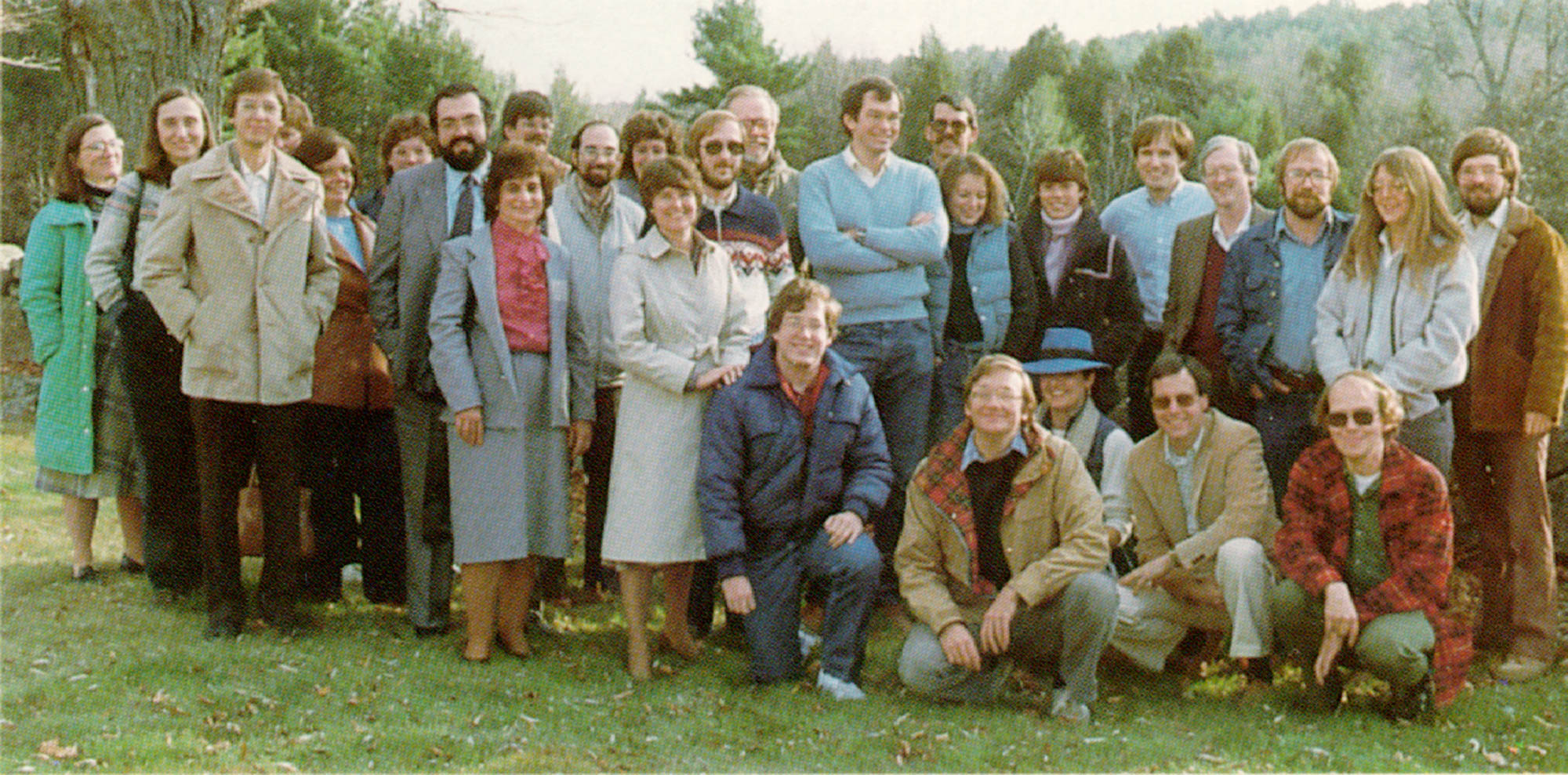
BYTE Magazine editorial staff, 1984.
Part II: Life After BYTE Magazine
I was on the BYTE masthead until 1987 but had transitioned to freelance consulting and software development. Clients included The Nebraska Videodisc Group, IBM, Professional Research Consultants and the State of Nebraska. In 1986 I started working on several projects for Lincoln Telephone, including Information Kiosks and their PrairieLink data communications service. In 1994 Lincoln Telephone started developing its Navix Internet service. I worked with their team to design web services. I also formalized a partnership with Lincoln Telephone to provide software design and web hosting services to complement LT&T’s data communications service, which lead to the start of my second dream job. In 1995, Ken Livingston and I founded Information Analytics. We were one of the first web design and web hosting firms in Nebraska. We worked with many cities to put their community marketing information online, including that of my hometown, David City. We also built and hosted services for the City of Lincoln. Information Analytics grew to about 18 employees at its peak and hosted hundreds of websites and thousands of email accounts for businesses in Nebraska and around the world. Most of our business was custom software development, e-commerce, intranet and extranet business applications and also some embedded systems applications and phone apps. We sold the business to Binary.net in 2015.
After Information Analytics, I returned to freelance consulting and software development, providing hosting and development services to several non-profit organizations including the International Association of Torch Clubs. I also turned one of my hobbies (photography) into a business. In 2016 I was one of the first to get FAA certification as a commercial drone pilot, and built a large library of stock photos and video, mostly of Nebraska landscapes and attractions for the tourism industry.
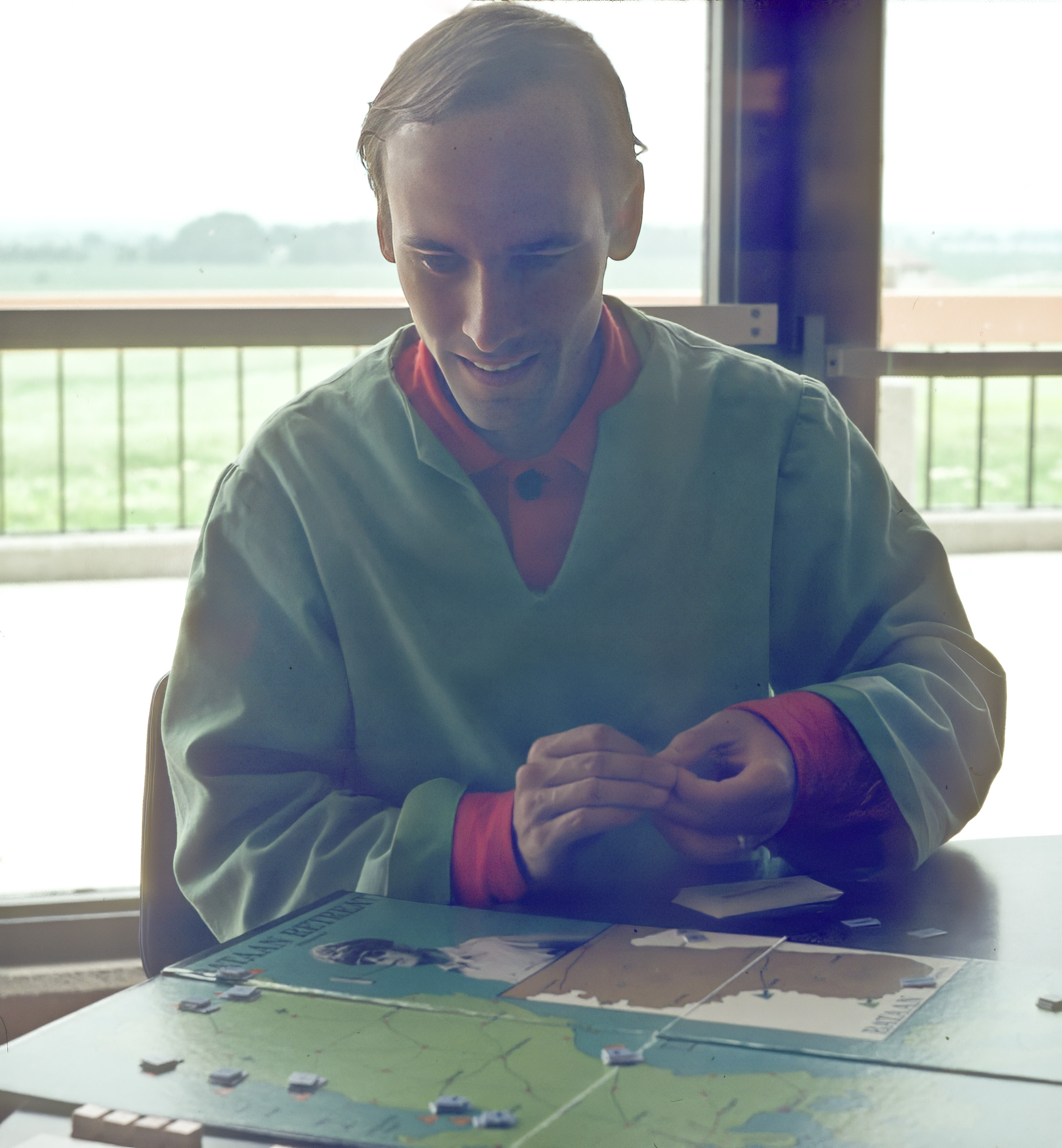
Chris Crawford, July 1979
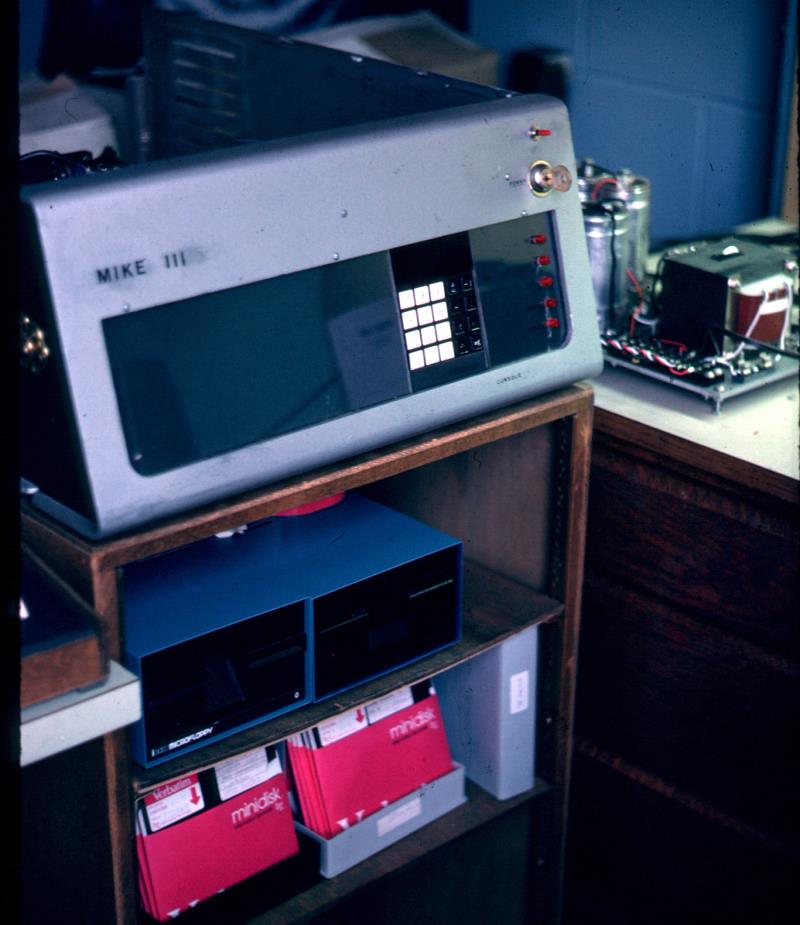
My Martin Research-based Z80 system, 1979
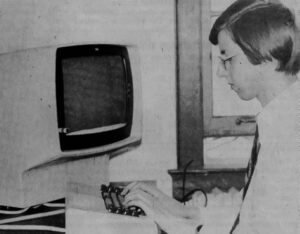
This is me working at an IBM 3278 terminal at NPPD, 1976.
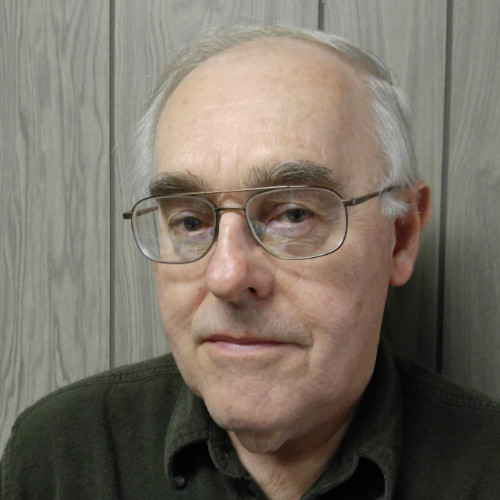
A recent photo of Jim Hanna
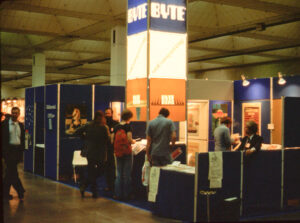
The BYTE booth at the Philadelpha Computer Show in October, 1979.
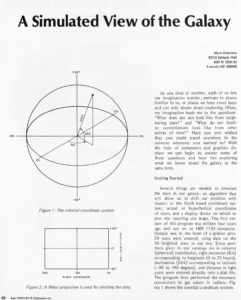
My first published article in BYTE, April 1979.
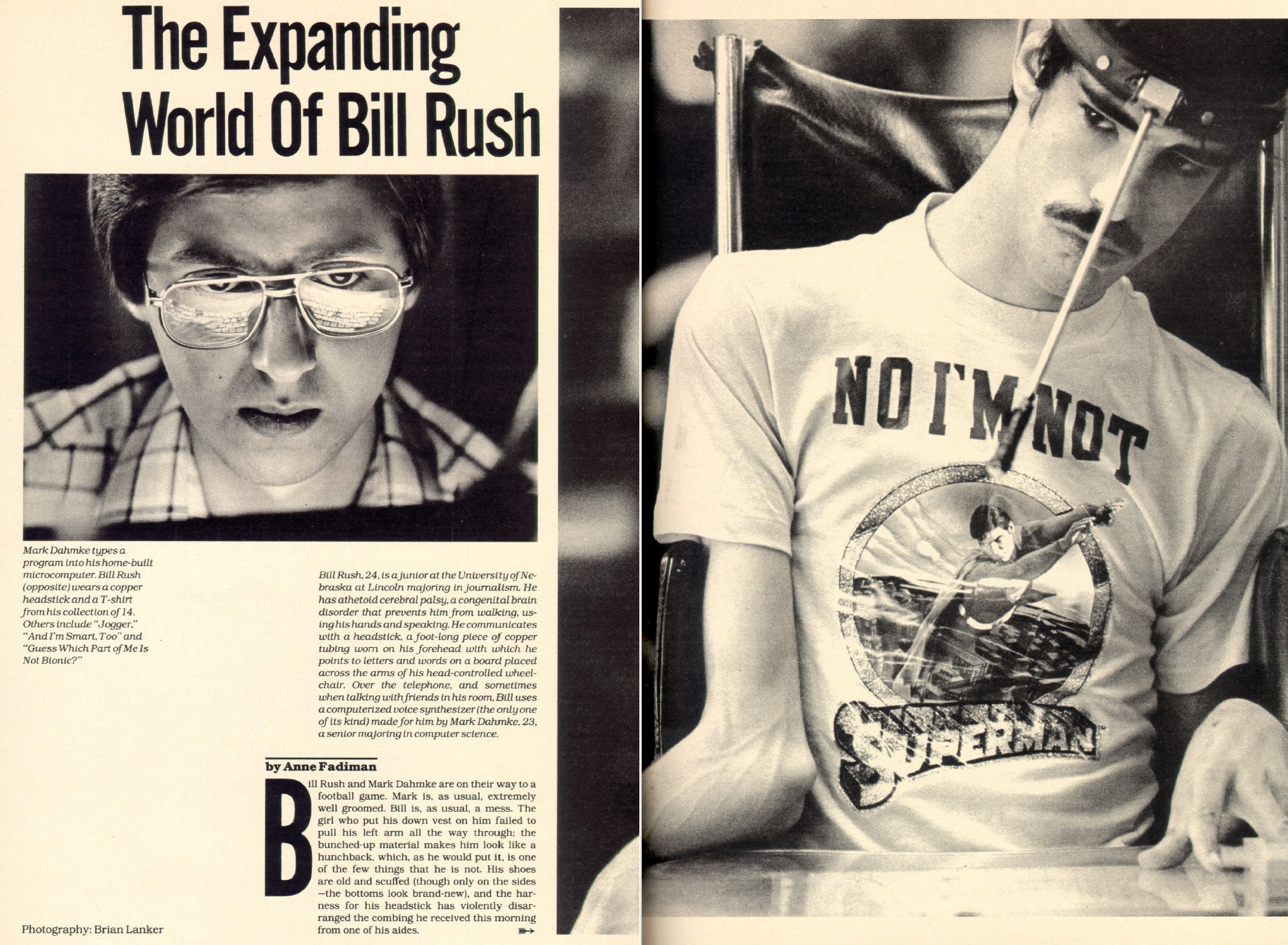
Life Magazine, January, 1980
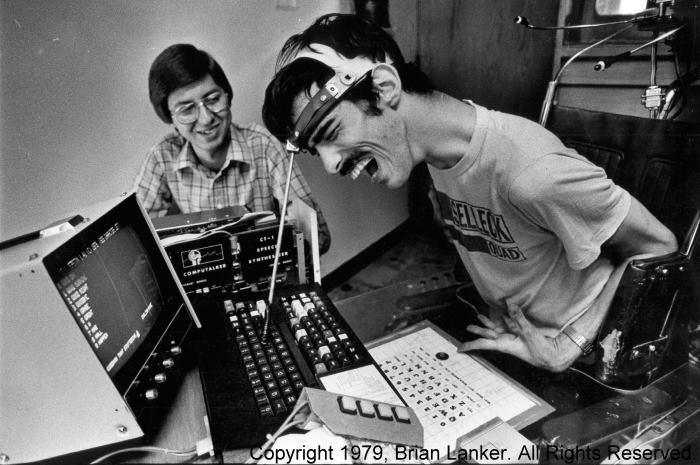
Bill Rush using the voice synthesizer software designed by Mark Dahmke, October, 1979. Photo by Brian Lanker, used with permission.
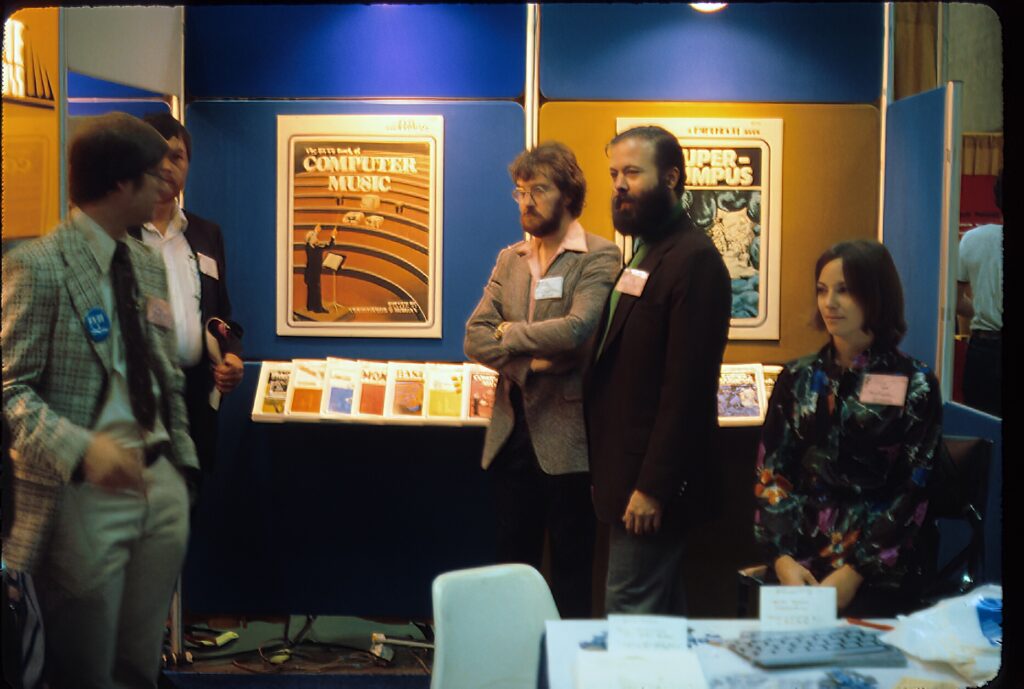
Chris Morgan and Carl Helmers at the BYTE Booth, Philadelphia, 1979.
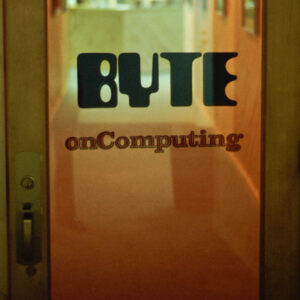
BYTE Offices, Peterborough, NH, 1979.
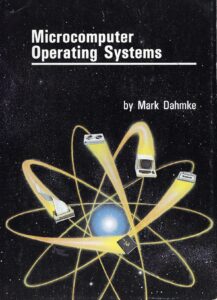
My first book, published in 1982.
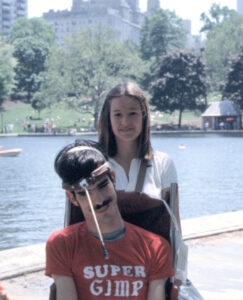
Anne Fadiman and Bill Rush, NYC, 1980.
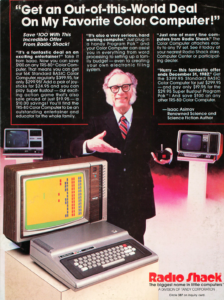
Isaac Asimov in Radio Shack computer ad.
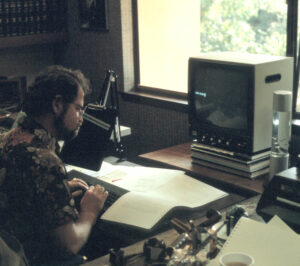
Larry Niven and his personal computer, 1981. Photo by Mark Dahmke.
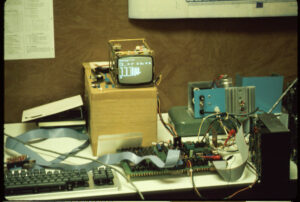
The Osborne I prototype, 1982. Photo by Mark Dahmke. (I have the only known photos of the first Osborne prototype. I donated the slides to the Computer History Museum)
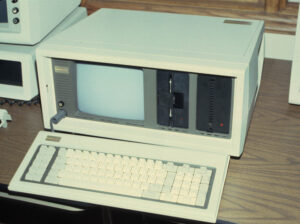
Compaq Portable Computer, 1982.
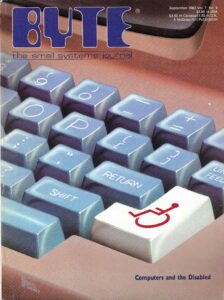
Related articles:
The Computalker Speech Synthesizer
The Mike III – my first personal computer (the Bionic Voice software was developed on this computer)
Kimtanktics, Chris Crawford
The History of Minspeak, by Bruce Baker
Journey Out of Silence, By William Rush
William Rush, Author and Journalist
Guest Editorial: Computer Speech – an Update
Guest Editorial: Let There Be Talking People Too
